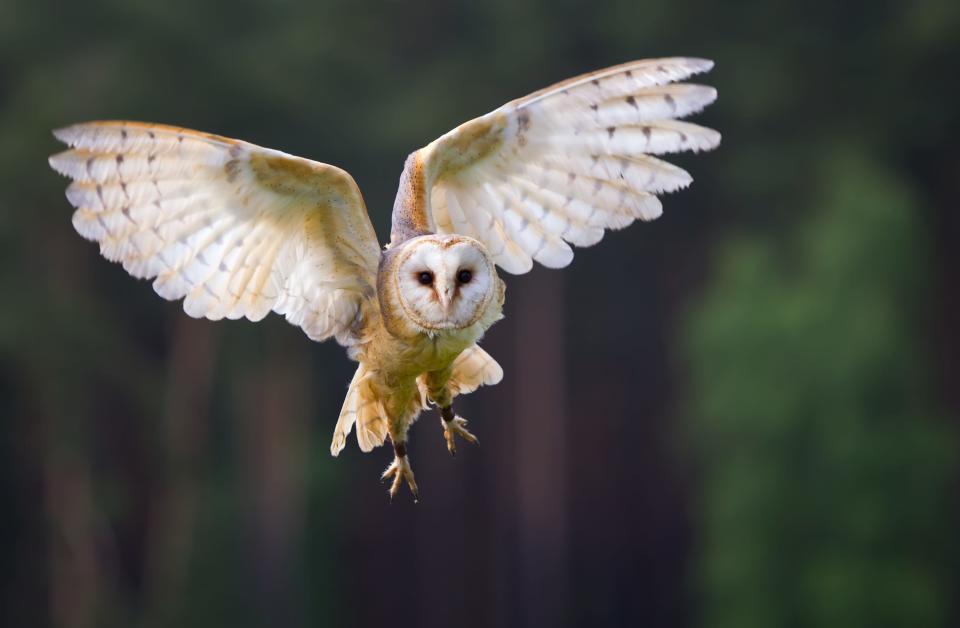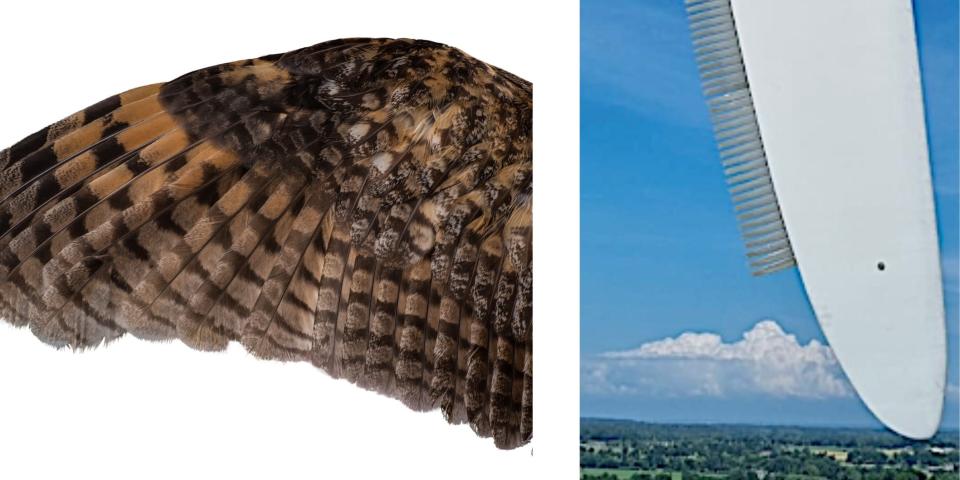-
Wind turbines are great for clean energy, but they’re not perfect. One issue is how loud it can be.
-
To solve this problem, designers are using owls as models to make their turbines quieter.
-
One company is adding saw-like edges similar to owl feathers to turbine blades to reduce noise.
One of the biggest problems facing wind farms is keeping their turbines quiet. The constant whistling sound is quieter than your average city traffic, but it can still cause headaches and tinnitus in people living nearby.
To help solve this problem, Biome Renewables has created a quieter wind turbine modeled on owl wings. FeatherEdge technology became available in its first installation in summer 2023.
“This seems like one of those perfect marriages where when you have a problem you have an animal counterpart,” said Ryan Church, founder of Biome Renewables.
How owls can help make quieter wind turbines


Owls can fly almost silently thanks to their trailing edge fringes, the downy layer of feathers on the trailing edge of their wings. This fringe reduces sound by breaking the vortices of air flowing through the wing. In other words, it reduces the amount of noisy air turbulence in the wing’s wake.
A recent study compared digital models of owl wings with and without fringes to measure how much noise that fringe could reduce in owls.
The researchers found that the fringed wing was up to 6.5 dB quieter than the bare wing, depending on the angle of flight. Every decibel counts, as it only takes one loud wing flap for an owl to alert its prey.
However, the study’s authors acknowledge that the fringes on real owl wings are not the same. The wires all have different thicknesses and curvatures, which affect how they direct air. This is important because the owl’s fringes not only block air currents; It also angles sound waves so that frequencies within their prey’s hearing range cancel each other out.
And that’s the “it” factor behind Biome Renewable’s FeatherEdge technology.


Many turbine manufacturers have taken inspiration from owl fringes to put saw-like edges (serrations) on turbine blades. Smooth serrated edges can reduce noise within the human hearing range by 1 dB to 2 dB compared to a bare blade.
But FeatherEdge takes the owl imitation one step further and is the first to give its fringes multiple layers. Their patented technology is called double bottom caterpillar.
“The standard serrated trailing edge is a tang, but we have some kind of groove or double spike at the top,” Church said.
“What this actually does is it launches a sound wave upward in the top part and another sound wave at the bottom. And they are balanced by a certain wavelength, so they cancel each other out,” Church said. aforementioned.
More specifically, double-bottom caterpillar eliminates the sound waves that produce the humming sound of turbines. These sound waves are at the lower end of the frequencies in the human hearing range (below 1000 hertz).
At these frequencies, Church said, FeatherEdge is 3.9 dB quieter than a standard serrated-edge blade and over 5 dB quieter than a completely bare blade. Decibel increases on a logarithmic scale; So if something is 5 dB quieter, people hear it 25% softer. This is significantly less than the difference between whispering and normal speech, but the contrast is noticeable enough for the human ear to detect.
Energy and space saving


This noise reduction feature doesn’t just help neighbors with sensitive ears. This is also good for a wind farm’s profitability.
Due to wind farm noise regulations in the US, wind turbines often operate in noise reduction mode, which costs a lot of energy.
But if the turbine blades are naturally quiet, you no longer need to spend that energy trying to silence the noise. “For every dB you can get back, you can basically get 4% to 5% more power in a year,” Church said.
Quieter turbines also help developers use land more efficiently.
“If you have a turbine that has a lower noise signature, you can place it closer to the receivers, so if you have a particular piece of land, you can put more turbines on that land than you could otherwise,” Church said.
Biome Renewables is currently working with developers to make its turbines available in North America and Europe in 2024. But thanks to the inspiring silence of owl wings, you may not even hear their turbines working.
Read the original article on Business Insider